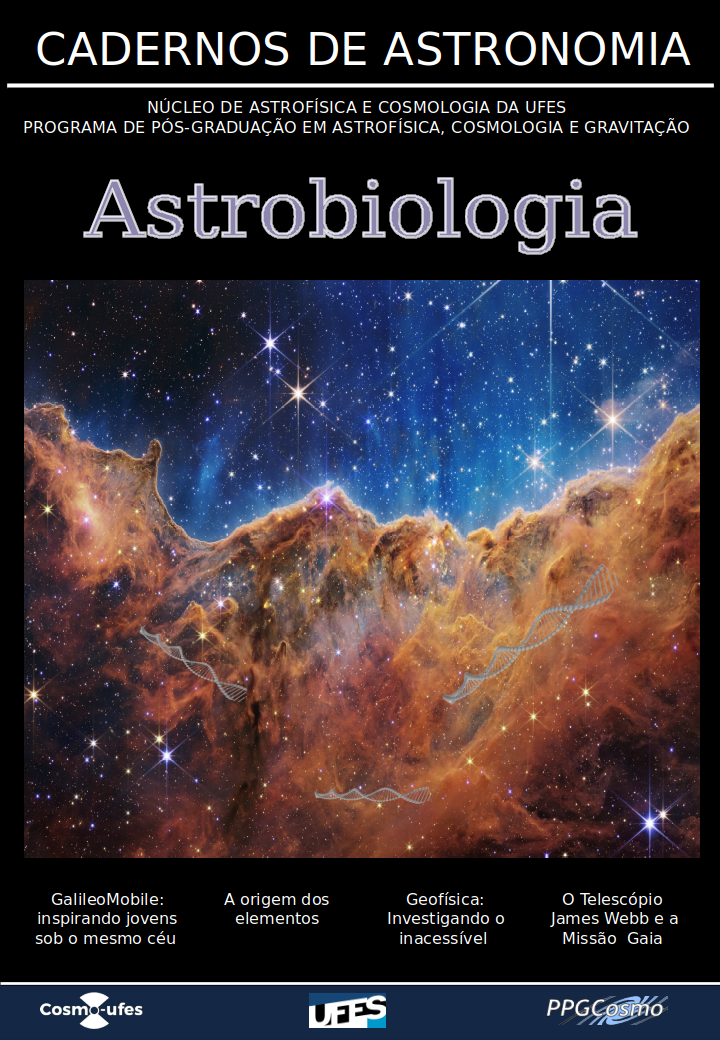Perturbações seculares nas órbitas de Júpiter e Saturno
DOI:
https://doi.org/10.47456/Cad.Astro.v3n2.38486Palavras-chave:
Laplace, Mecânica celeste, ÓrbitasResumo
A atração gravitacional mútua entre os planetas do sistema solar provocam alterações nas suas orbitas que seriam perfeitamente elípticas se os planetas estivessem sujeitos somente sob a ação gravitacional do Sol. Essas alterações nas orbitas podem ser de períodos relativamente curtos (alguns anos) ao final dos quais os planetas voltam ao seu estado anterior. Podem também ter um efeito cumulativo alterando pouco a pouco as orbitas ao longo de anos ou séculos seguidos modificando completamente a órbita original ou retornando ao estado inicial depois de vários séculos. Essas são as mais interessantes de se analisar e são chamadas de perturbações seculares. Nesse texto se analisa o caso mais aparente desse fenômeno é a interação gravitacional entre Júpiter e Saturno. Alterações significativas foram detectadas pelo astrônomo Halley em 1695, e naquela época nenhuma justificativa razoável à luz da lei da gravitação universal foi encontrada, chegando a se duvidar da validade dessa lei. O problema foi solucionado quase 100 anos depois por Laplace. Esse texto é uma analise do artigo de Laplace, Mémoire sur les inégalités séculaires des planètes et des satellites, de 1787, e seus desdobramentos posteriores.
Referências
R. Tarnas, A epopéia do pensamento ocidental (Bertrand Brasil, 1999).
P. S. Laplace, Mémoire sur les inégalités séculaires des planètes et des satellites, Mémoires de l’Académie Royale des Sciences de Paris, 49–92 (1787).
V. I. Arnold, Mathematical methods of classical mechanics (Springer, Nova York, 1978).
J. Stillwell, Mathematics and its history (Springer, Nova York, 2010), 3ª ed.
Downloads
Publicado
Edição
Seção
Licença
Copyright (c) 2022 LUIZ PEDRO OROSZ

Este trabalho está licenciado sob uma licença Creative Commons Attribution 4.0 International License.






